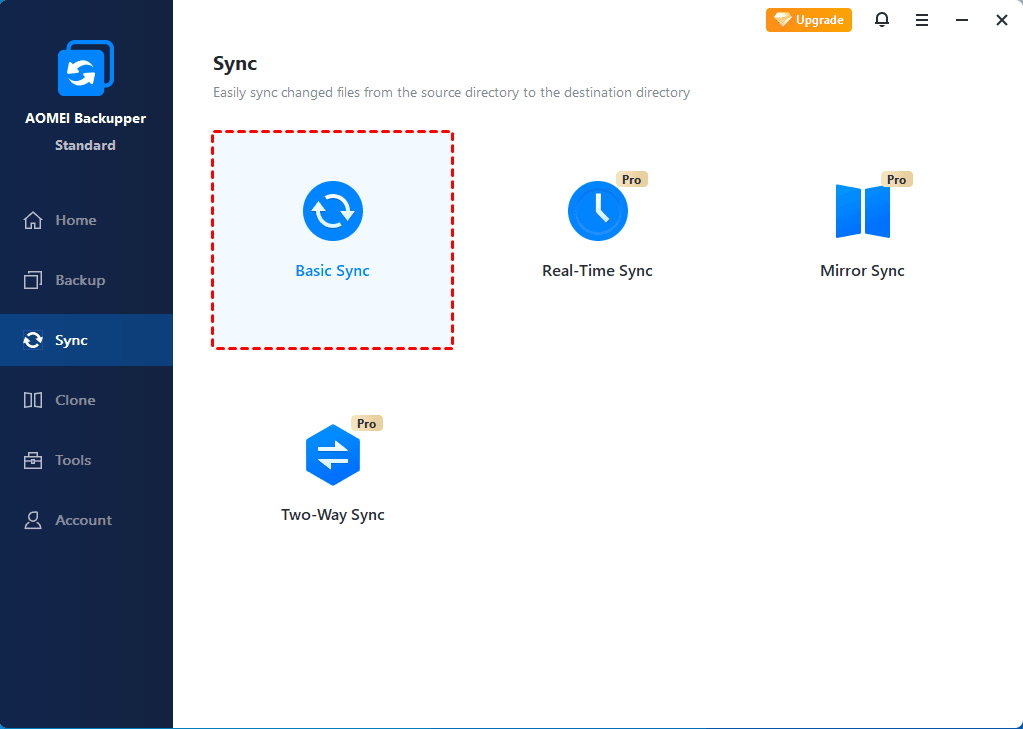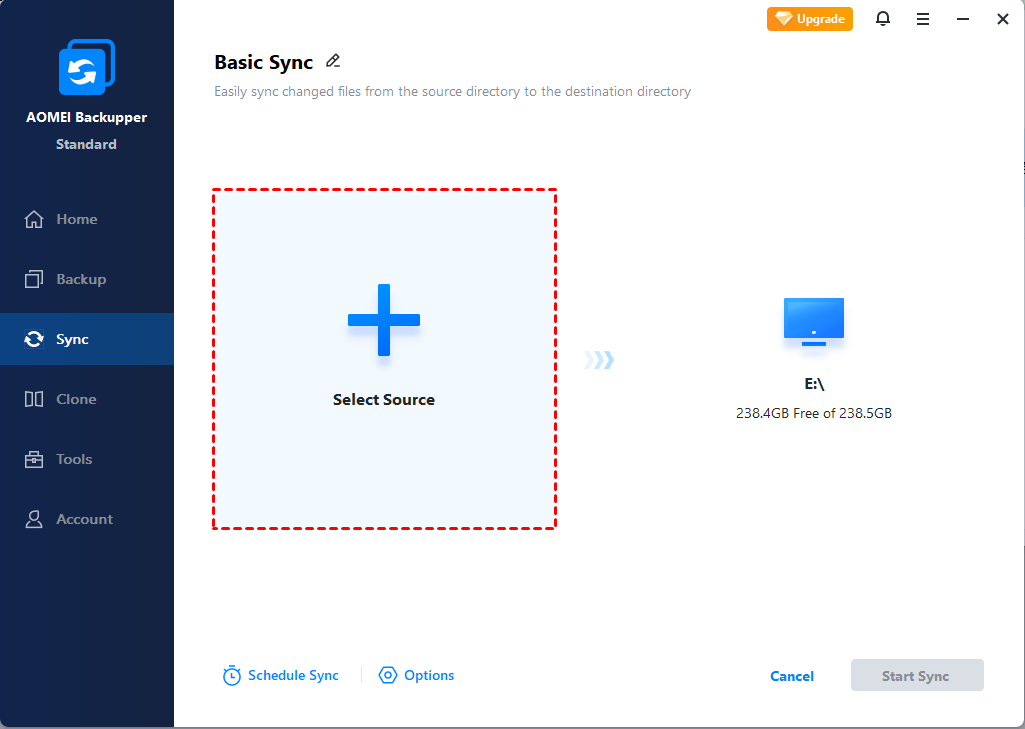How to Sync Files & Folders between Computers over Network
You will learn how to sync folders between 2 computers over network, whether it's on the same LAN or not, and there are 3 methods in total.
Need to Sync Folders between Computers over Network
For teamwork or disaster recovery purposes, many people would like to sync files and folders between computers to keep the data consistent and up-to-date. But how to make it happen?
The usual method is to manually copy folders to a USB drive, and then paste them to the destination computer. Once the source folder is modified, however, you have no choice but to copy the changed files again.
To make things easier, you may want to directly sync folders over network, and I'll introduce you 3 easy methods, so that you don’t need a removable device, any changes in the source folder can be auto-synced to the destination.
Sync Files between Computers via Network Shared Folder
Can you sync files & folders between computers without cloud such as Google Drive and OneDrive? The answer is yes, you don't necessarily need a cloud drive if you only want to sync folders over network.
On Windows PCs, syncing folders over network requires you to create a shared folder and authorize other users in the same LAN to read and write it. If you want to manage the folder sync more flexibly and safely, like synchronizing files between various sources and targets automatically, you could also create sync tasks with file sync tool.
How to create a shared folder for file sync
Step 1. Right-click the folder you want to share, choose Properties.
Step 2. Switch to Sharing tab and click on Share… to give network access to the user groups you want. To allow everyone on the network to access this folder, just choose Everyone and click Add > Share.
Step 3. Go to Advanced Sharing section, click Advanced Sharing... and then tick Share this folder to enable the network sharing.
Step 4. Select Everyone and set permissions for it, like Full Control, Change or Read.
How to sync files over network with shared folder
Step 1. On another computer with permission, press Win + R key to open the Run box.
Step 2. And then type \\ + computername or IP address of the source computer, \\192.168.0.55, for example and press Enter to get access to it. You can also be able to find it in File Explorer > Network.
Note: If you see an error message like “Network discovery is turned off….” in the Network section, please click on the "Network discovery is turned off" banner, then select Turn on network discovery and file sharing.
Step 3. Select files or folders you want to sync, copy and paste them on the second computer.
Advanced Way to Auto Sync Folders between Computers over Network/Internet
This way is actually based on Method 1, but automate the sync process and save you the trouble of manual copy & paste, even for multiple folders and different computers. You need the help of file sync software like AOMEI Backupper Standard.
★ AOMEI Backupper Standard is a freeware supporting Windows 11/10/8.1/8/7/XP/Vista. The intuitive interface and simple operation enables you to complete a sync task within 3 steps.
★ You could set up a sync schedule to run the sync task automatically, like Daily/Weekly/Monthly/etc.
★ In addition to sync over network, you can also sync folders to OneDrive, Google Drive, Dropbox, external hard drive, USB flash drive, NAS, etc.
Download and install the Standard edition to enjoy free file sync feature. For server users, please try Server edition.
Step 1. Launch the software on any of the computers within the same LAN, go to Sync tab and choose Basic Sync.
You can upgrade to enjoy more advanced sync features:
Real-Time Sync: sync changed files from the source directory to the destination directory in real time.
Mirror Sync: always keep the files in the destination directory exactly the same as the source directory.
Two-Way Sync: any changes in the source of destination directory will be synced to the other side mutually.
Step 2. Click Add Folder to select folder on the local computer. You can add multiple folders as you like by clicking the + button.
Then click the destination box, select Add Share or NAS Device, type the network path (the IP address of another computer and then select one shared folder on it.
Step 3. Click Schedule Sync to create daily, weekly, or monthly automatic sync task, and Start Sync. And it will auto sync the changes to the target folder at the next scheduled sync after you modify these files.
★ Helpful feature you may need
As cloud storage is becoming more and more popular, AOMEI offers users its own cloud - AOMEI Cloud. After you sign up for an AOMEI account, you can use 1TB storage for free within 15 days. You can backup all your important stuff to AOMEI Cloud, like documents, pictures and favorite music, etc.
How to Sync Folders over Network with Offline Folder
Besides using a shared folder, you can also sync network folders with the offline folder. This method requires you to enable offline files on the second computer and then set the always available offline option. Thus, you will always have a copy of files, even if the computer is off.
Step 1. Input “mobsync” in the search box, and hit Enter key.
Step 2. Click Manage offline files > Enable offline files > OK. It requires you to restart your computer, otherwise you cannot activate the offline files folder.
Step 3. Go to This PC and select Map network drive. Then, select drive letter and type network path (the IP address of your souce computer), click Finish.
Step 4. Go to the mapped network drive, right-click the files or folder you want to access and select Always available offline option. Wait until you see the words like “ your files will be available offline”.
Conclusion
To sync folders between computers over network, you can choose to sync files manually from the shared folder by the copy and paste method or automatically using a file sync tool - AOMEI Backupper Standard. Besides, you still can sync folders between computers using cloud drives or offline folder feature.
Among them, the file sync software is the most compatible one, since it not only helps you to sync files automatically but also supports different sync paths, such as shared folders, cloud drives, external devices, etc. Thus, you will always have a copy of the latest files. All in all, it's a good software for data migration and protection!



